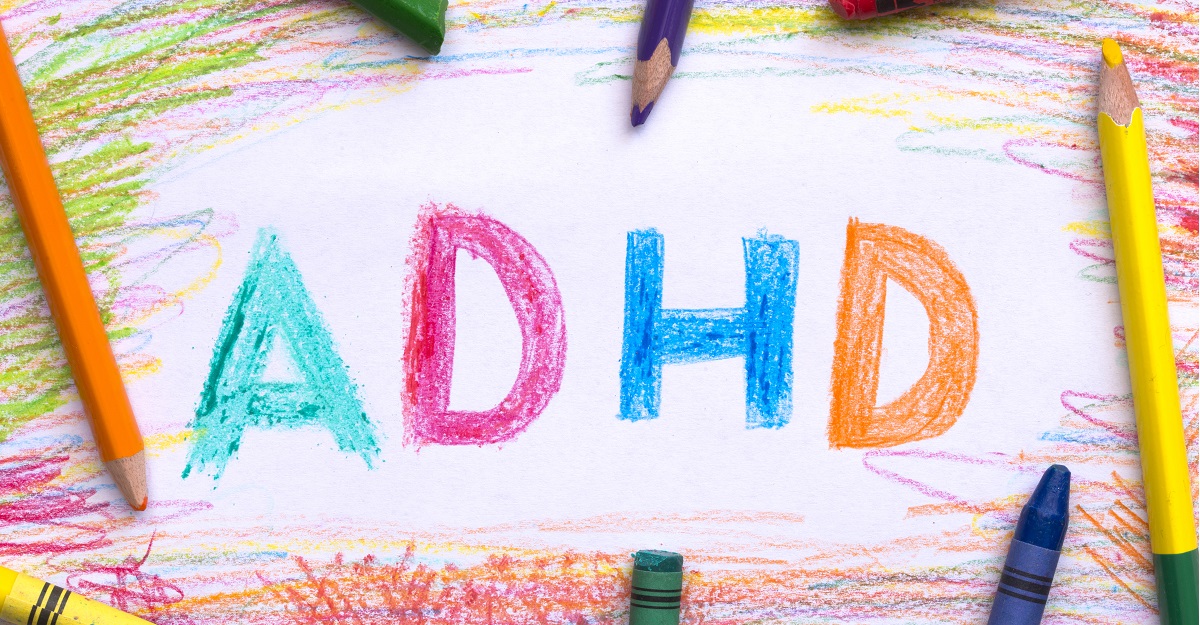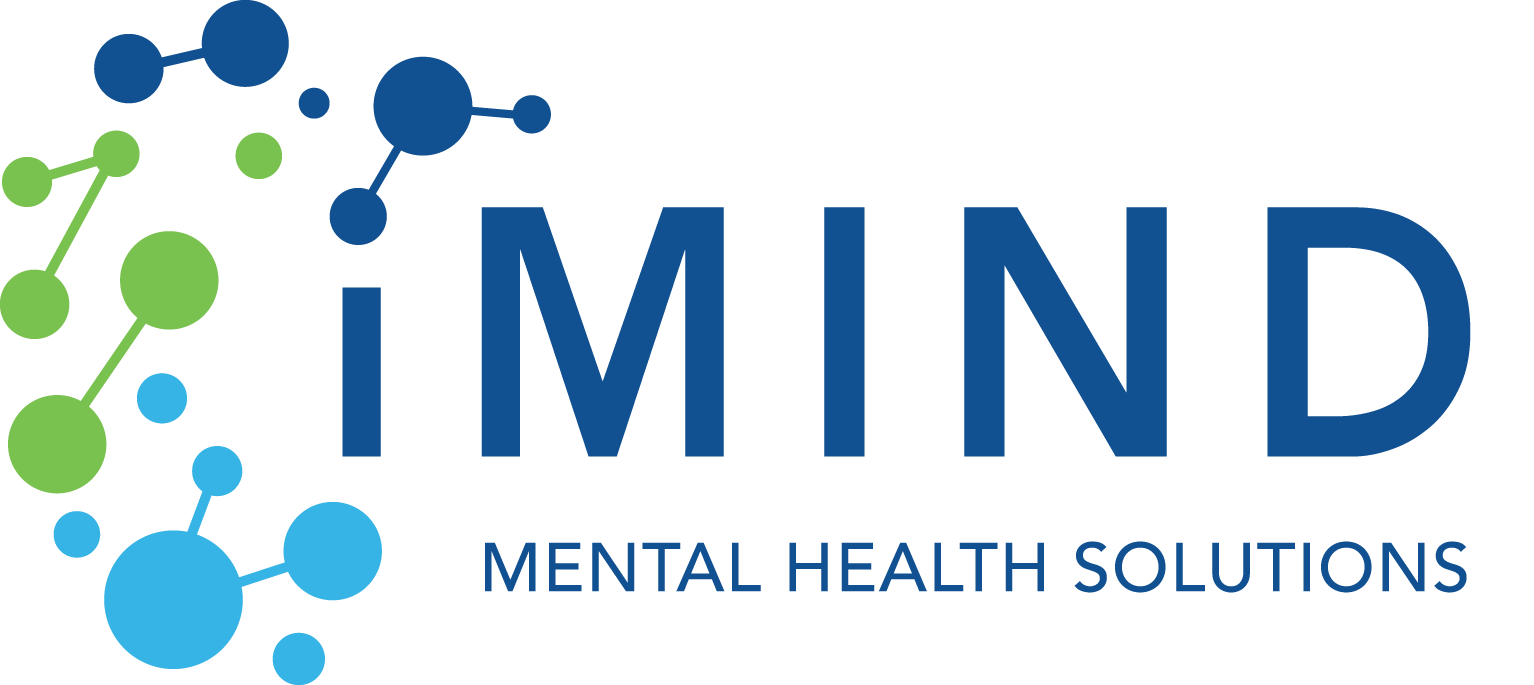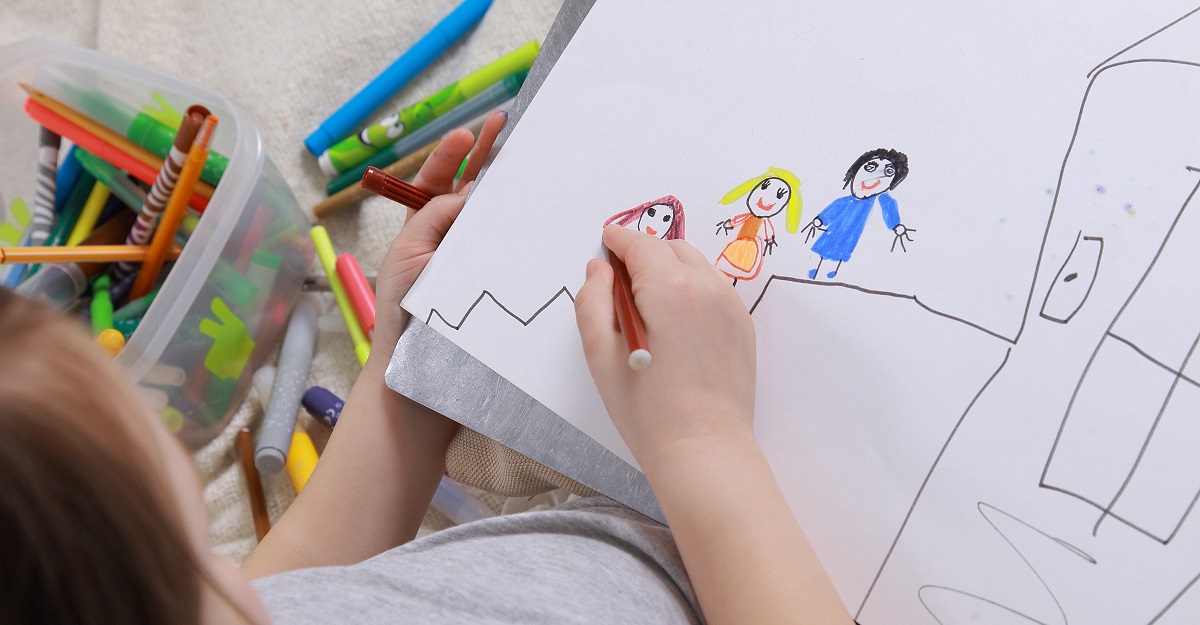Does My Child Have ADHD?
iMind Mental Health Solutions Resource

The signs can be there very early. Your toddler cannot sit still, makes a lot of noise, talks more than others their age, and is in incessant motion, as if they are “being run by a motor”. They can switch from activity to activity within seconds. You may not even question it, though, until the messages from teachers start to roll in during elementary school: Your child is talking in class, disturbing others, and cannot seem to concentrate on the lessons or stay in their seat. It’s typically during this time that ADHD is diagnosed.
Attention-Deficit/Hyperactivity Disorder, commonly abbreviated as ADHD, is a neurodevelopmental disorder commonly recognized in childhood. The most common age at diagnosis is six years old. ADHD manifests through pronounced symptoms of distractibility, impulsiveness, and, in many cases, excessive activity that is beyond the expected behavior for a person’s age and development.
This disorder can significantly influence a child’s schooling, social interactions, and daily routines, making early detection and support essential for their wellbeing and development. About 10 percent, or one in 10 people, have diagnosed ADHD.
Types of ADHD
ADHD is categorized into three primary types, based on the predominant symptoms a person exhibits:
- Predominantly Inattentive Presentation: This involves symptoms of inattention, such as difficulty focusing on a task, trouble following instructions, and problems with organizing tasks. This type is sometimes less noticeable than others, as it does not involve the overt physical activity that characterizes hyperactivity. This type was formerly referred to as ADD, or attention deficit disorder. It is now considered a subtype of ADHD.
- Predominantly Hyperactive-Impulsive Presentation: This involves symptoms of hyperactivity, such as fidgeting, interrupting, and acting without much consideration for consequences. Although a certain amount of impulsivity and excessive movement are normal during some stages childhood, the level observed in the child don’t fit with the person’s age. This is why ADHD is more noticeable when the child attends school, where they are among many other children the same age and differences stand out.
- Combined Presentation: The most common form of ADHD is the combined presentation, where people have both types of symptoms. This combination affects a wide range of activities and is identified by a significant number of symptoms from both categories.
7 Common Myths and Facts About ADHD
ADHD is one of the disorders that is frequently misunderstood. It wasn’t always perceived as the brain disorder that it is. Here are common myths about ADHD:
Myth 1: ADHD is just a lack of discipline or bad parenting.
Fact: ADHD is a medically recognized neurodevelopmental disorder. It’s rooted in brain function and often genetic, not the result of parenting styles or discipline techniques. There are differences in the brains of those with ADHD versus those without.
Myth 2: Only hyperactive boys have ADHD.
Fact: ADHD affects both genders and all age groups. While boys are diagnosed more frequently, possibly due to more overt hyperactivity, girls often have the predominantly inattentive form of ADHD, which can be less conspicuous but equally impactful.
Myth 3: People with ADHD cannot focus on anything.
Fact: Individuals with ADHD may have difficulty with sustained attention, especially on tasks they find uninteresting. However, they can also experience hyperfocus, an intense concentration on tasks they find engaging or rewarding.
Myth 4: ADHD is caused too much screen time or a high sugar diet.
Fact: While lifestyle factors, like screen time and diet, can influence behavior, ADHD’s causes are more complex and rooted in brain development and genetics. There’s no evidence to support that sugar or screen time alone can cause ADHD.
Myth 5: ADHD isn’t a real medical condition.
Fact: ADHD is recognized by major medical, psychological, and educational organizations, supported by decades of clinical research. It involves noticeable differences in brain structure and function, particularly in areas related to attention, impulse control, and executive functioning.
Myth 6: Children can outgrow ADHD
Fact: Recent studies indicate that the symptoms of ADHD often persist into adulthood. While about 30 percent seem to recover from ADHD, most of these, or 60 percent, had symptoms recur. Most adults who didn’t meet ADHD diagnosis criteria were either taking medicine for ADHD or still have symptoms surface sometimes.
Myth 7: Children with ADHD can’t experience success in school or as adults
Fact: ADHD is a manageable condition. There are many successful adults with ADHD (including Bill Gates, Walt Disney, John F. Kennedy, Leonardo DaVinci, to name a few). The key is learning to work with it and seeking the proper treatment when needed. As a parent, you can also teach your child ways to self-manage that will help them succeed in school and in life.
Signs and Symptoms of ADHD in Children
“‘Many scientists, writers, and artists with ADHD have had very successful careers, in large part because of their ability to focus on what they’re doing for hours on end.’”
-Kathleen Nadeau, Ph.D., in an interview with ADDitude
Understanding the signs and symptoms of ADHD in children is crucial for early identification and support. It’s important to distinguish these symptoms from age-appropriate behaviors, as children naturally exhibit varying levels of energy, focus, and self-control as they grow and develop.

Inattention
Children who have ADHD often find it challenging to maintain concentration on tasks demanding continuous mental engagement, like homework or classroom assignments. This issue may appear as a struggle to focus on finer details, committing inadvertent errors in their school tasks, or often moving between activities without completing them. Forgetfulness in daily activities and challenges in organizing tasks or following through on instructions are also common. These challenges are not occasional but consistent and can make them unable to function effectively in different settings.

Hyperactivity
Hyperactivity in children with ADHD goes beyond the typical energy levels seen in healthy development. It can appear as excessive fidgeting with hands or feet, squirming in their seat, or a tendency to leave their seat in situations where remaining seated is expected. Children may also not be able to play quietly. They need to always be moving, and may be louder than their peers. This level of hyperactivity is disruptive and out of sync with the expected behavior for their age.

Impulsivity
Children with ADHD may act impulsively, making quick decisions without prior thought, which could result in negative or harmful consequences. This can include interrupting conversations or games, acting without regard for consequences, or having difficulty waiting for their turn. This impulsiveness is not just occasional poor judgment but a consistent behavior that can cause difficulties in social interactions and learning environments.

Age-Appropriate Behaviors vs. ADHD Indicators
Distinguishing between typical childhood behavior and symptoms of ADHD is vital. While many children can be restless, inattentive, or impulsive at times, these behaviors are more frequent and intense in children with ADHD. The key indicators of ADHD are the consistency and impact of these behaviors on a child’s ability to function daily. For example, while it’s normal for young children to have short attention spans, those with ADHD might not only struggle to focus but also find it hard to follow simple instructions, leading to significant challenges at school and home.
Recognizing these signs and understanding their implications allows parents and educators to seek the necessary support and interventions. Empathy is vital when addressing these symptoms and an evaluation by a healthcare professional if ADHD is suspected is absolutely necessary. Early identification and intervention can make a significant difference in the lives of children with ADHD, helping them to achieve their potential and thrive in various aspects of life.
When to Seek Professional Help
“You may be thinking, ‘How can my ADHD symptoms like hyperfocus actually help me?’ Denise Duffield-Thomas, founder of Money Mindset, attributes her ability to hyperfocus, or stick with a task for long periods of time, an asset. Her ability to hyperfocus to do what she calls ‘batching’ enables her to complete a large amount of work at a time. ‘I made 33 episodes of podcasts in one go,’ she says.
She recognized as a student that she had the ability to complete assignments after one attempt or read a whole book extremely fast. Realizing her strengths early helped her identify their usefulness in the workplace.”
–ADHD Benefits in the Workplace, Children and Adults with Attention-Deficit/Hyperactivity Disorder (CHADD)
Identifying the right time to seek professional help for a child who may have ADHD is crucial for their development and well-being. The process involves careful observation, documentation, and consultation with educators and healthcare professionals.

Observation and Documentation
Parents and caregivers are in the best position to first spot signs of ADHD in a child. It’s important to observe and document these behaviors over time to understand their frequency, intensity, and impact on the child’s daily life. Keep a record of instances of inattention, hyperactivity, and impulsivity, noting when and where these behaviors occur. This information is helpful for healthcare providers to assess the child accurately.

Consulting with Educators and Caregivers
Children with ADHD may exhibit different behaviors in various settings. Consulting with educators, babysitters, and other caregivers who interact with the child can provide a more comprehensive view of their behaviors. These observations can reveal patterns and specific challenges the child faces, offering insights that are crucial for a thorough assessment.

Seeking a Professional Diagnosis
When signs of ADHD persist and significantly impact the child’s functioning, it’s time to seek a professional diagnosis. The process typically involves:
- Initial Consultation: Start with a visit to a pediatrician or primary care physician who can provide an initial evaluation and refer you to a specialist if necessary.
- Comprehensive Evaluation: A child psychologist, psychiatrist, or a pediatric neurologist specializing in ADHD can conduct a comprehensive assessment. The evaluation may include interviews, questionnaires, behavioral observations, and possibly neuropsychological testing.
- Collaborative Diagnosis: A diagnosis of ADHD is based on a set of criteria defined in the DSM-5 (Diagnostic and Statistical Manual of Mental Disorders). Healthcare providers consider the child’s history, symptoms, and the impact of behaviors on their functioning across multiple settings.
- Developing a Treatment Plan: Once diagnosed, the healthcare provider will work with the family to develop a personalized treatment plan. This strategy might combine behavioral therapy, academic assistance, medication, or a blend of these methods.
Action is crucial for the effective management of ADHD. By seeking professional help promptly, parents can ensure that their child receives the support and resources necessary to thrive.
Supporting Your Child
“‘I’ve learned to work with my ADHD. When things come up – I get a text or an email on some issue or project – I handle it right then. I do whatever is next to keep things moving forward. Then, when it comes up again, I again handle the next step immediately. I’ve learned that everything that needs to get done gets done that way.’”
–Multi-Million Dollar Business Owner, Orlando, Florida
Helping a child with ADHD navigate daily life requires practical strategies, as well as patience and understanding. This section offers guidance on creating supportive environments, managing behaviors effectively, and understanding treatment options, all aimed at helping your child thrive.

Creating a Supportive Environment
Home and School Modifications: Small changes in the home and classroom can significantly benefit a child with ADHD. This includes organized, clutter-free spaces and clear, consistent routines.
Accommodations for Learning: Work with educators to implement accommodations that aid learning, such as extra time for tests, breaks during homework, or seating arrangements that minimize distractions.
Positive Reinforcement: Emphasize positive reinforcement to encourage desired behaviors. Reward systems and praise for specific achievements can motivate children with ADHD.

Strategies for Behavior Management
Consistent Rules and Expectations: Establish and maintain a consistent set of rules and expectations. Children with ADHD do best with consistent structure and clear communication.
Skill Building: Teach coping strategies and social skills through modeling and role-playing. Help your child develop ways to express feelings, manage time, and solve problems effectively.
Mindfulness and Relaxation Techniques: Introduce practices that reduce stress and increase focus, such as mindfulness exercises, deep breathing, or yoga tailored for children.

The Role of Medication and Therapy
Behavioral Therapy: This form of therapy focuses on changing behavior patterns and is often effective for children with ADHD. It can include strategies for organization, improving social skills, and managing emotions.
Medication: While not suitable for every child, medication can be an integral part of treatment for some. Stimulant and non-stimulant medications are the most common types used to manage ADHD symptoms. It’s vital to work closely with your child’s doctor to monitor their response to the medication and adjust the treatment as needed.
Tailored Approach: Every child with ADHD is unique, and successful management involves customizing treatment to fit their specific needs. This may involve a combination of behavioral strategies, educational interventions, medication, and family support.
Empowering Parents and Children to Manage ADHD
Empowering both parents and children is a critical aspect of managing ADHD effectively. Knowledge, advocacy, and support networks play pivotal roles in navigating the challenges and embracing the journey with ADHD. This section outlines strategies for education, advocacy, and building a strong support system.
Educating Yourself and Your Family
Gaining a deep understanding of ADHD is foundational for providing the right support to a child.
To do this, you can access reliable resources such as books, reputable websites, and scholarly articles about ADHD to understand its nuances and the latest research.
Participating in educational events hosted by mental health organizations or educational institutions can give you insights and strategies from experts.
You can also utilize online forums, webinars, and social media groups dedicated to ADHD for up-to-date information and community advice.
Advocating for Your Child
Effective advocacy ensures that your child receives the necessary accommodations to succeed in school and other environments.
Make sure you understand laws and policies that protect the educational rights of children with ADHD, such as the Individuals with Disabilities Education Act (IDEA) in the United States.
Building a collaborative relationship with your child’s teachers and school administrators so they can make appropriate accommodations, such as modified homework assignments or testing environments.
Finally, keep organized records of your child’s diagnosis, treatment plans, and any communications with educators to support your advocacy efforts.
Building a Support Network
A robust support network can provide invaluable emotional support and practical advice for both parents and children. Connect with other parents by joining support groups, either locally or online. These can offer a sense of community and shared experiences.
Seek professional support through therapists, counselors, or ADHD coaches who understand the challenges of ADHD can offer strategies tailored to your child’s needs.
Empower your child by encouraging them to participate in groups or activities with peers who have ADHD. Connecting with those who share similar experiences can help your child feel understood and supported.
The ADHD Journey
In embarking on this journey with ADHD, remember that understanding, patience, and support are your greatest allies. There will be challenges, but also opportunities for growth, learning, and remarkable resilience. By equipping yourself with knowledge, advocating for your child’s needs, and building a strong support network, you’re setting the foundation for a fulfilling path ahead.
Embrace the journey with empathy and optimism, knowing that with the right strategies and resources, your child can thrive. Together, you can navigate this path, celebrating each success and learning from every experience. Here’s to empowering yourself and your child toward a bright and promising future.
- American Academy of Child and Adolescent Psychiatry. (2017, February). ADHD & the Brain. Aacap.org.
- ADDitude Editors. (2016, November 28). 17 Things to Love About ADHD! ADDitude.
- ADHD Benefits in the Workplace. (n.d.). CHADD.
- Ashinoff, B. K., & Abu-Akel, A. (2019). Hyperfocus: the Forgotten Frontier of Attention. Psychological Research, 85(1), 1–19.
- Attention-Deficit/Hyperactivity Disorder (ADHD). (n.d.). National Institute of Mental Health (NIMH).
- FastStats – Attention Deficit Hyperactivity Disorder. (2019). Centers for Disease Control and Prevention.
- Morgan, K. K. (n.d.). Can You Outgrow ADHD? WebMD. Retrieved March 24, 2024.
- Rucklidge, J. J. (2010). Gender differences in attention-deficit/hyperactivity disorder. The Psychiatric Clinics of North America, 33(2), 357–373.
Latest News
-
Top 10 Questions About Art Therapy for Mental Health
Art therapy has recently gained recognition for its unique blend of healing therapy and personal expression. Despite its growing popularity, there seems to be some misunderstanding about what art therapy entails, who it can benefit, and how it differs from other forms of therapy.
-
ADHD Strengths: The Positive Side of Attention Deficit Hyperactivity Disorder
Scattered minds, fidgety bodies, and difficulty focusing. Attention Deficit Hyperactivity Disorder (ADHD) often gets painted in shades of struggle. But what if there’s a brighter side to the story? What if, beneath the challenges of ADHD, lie unique strengths just waiting to be unlocked?



